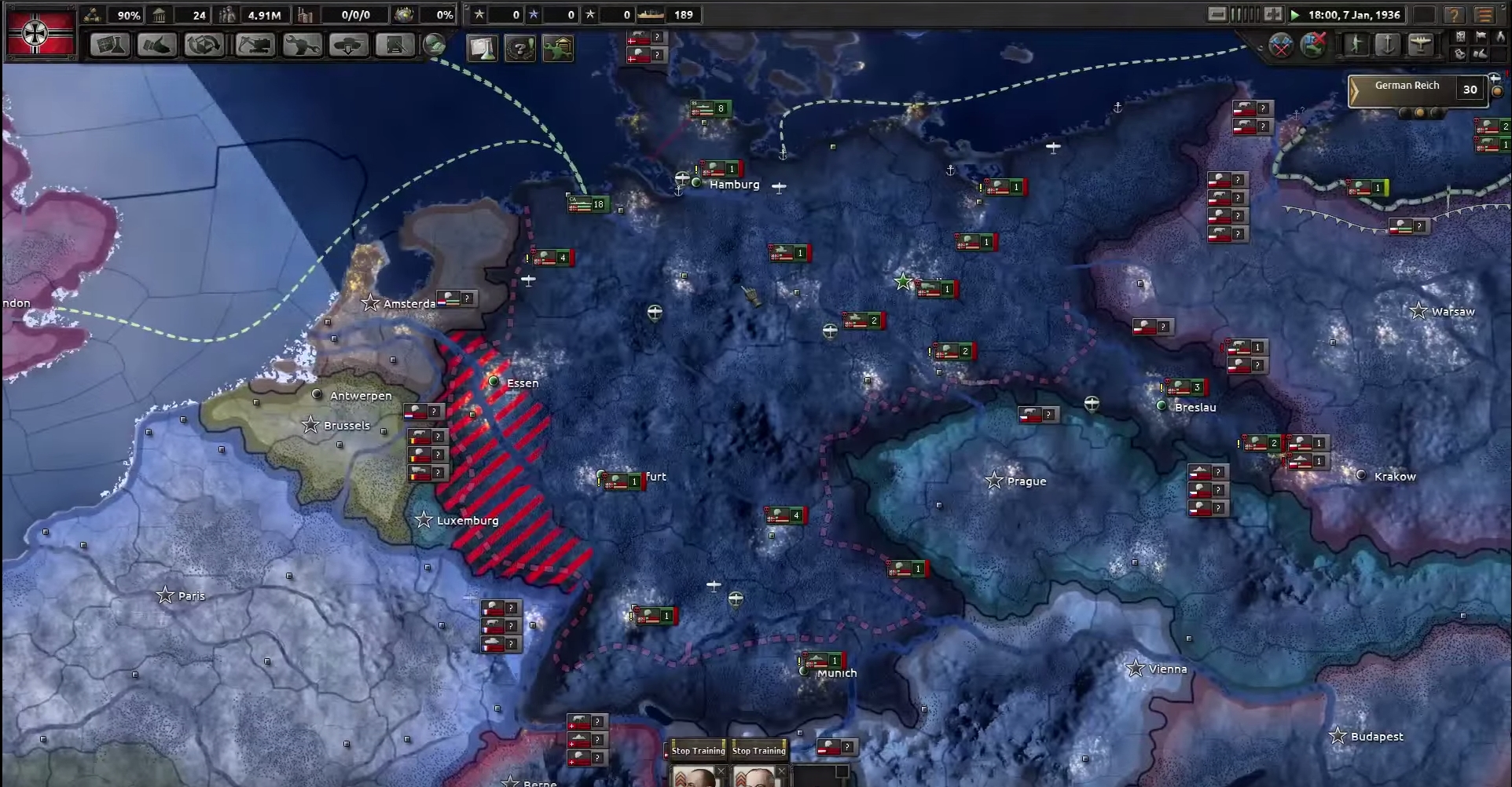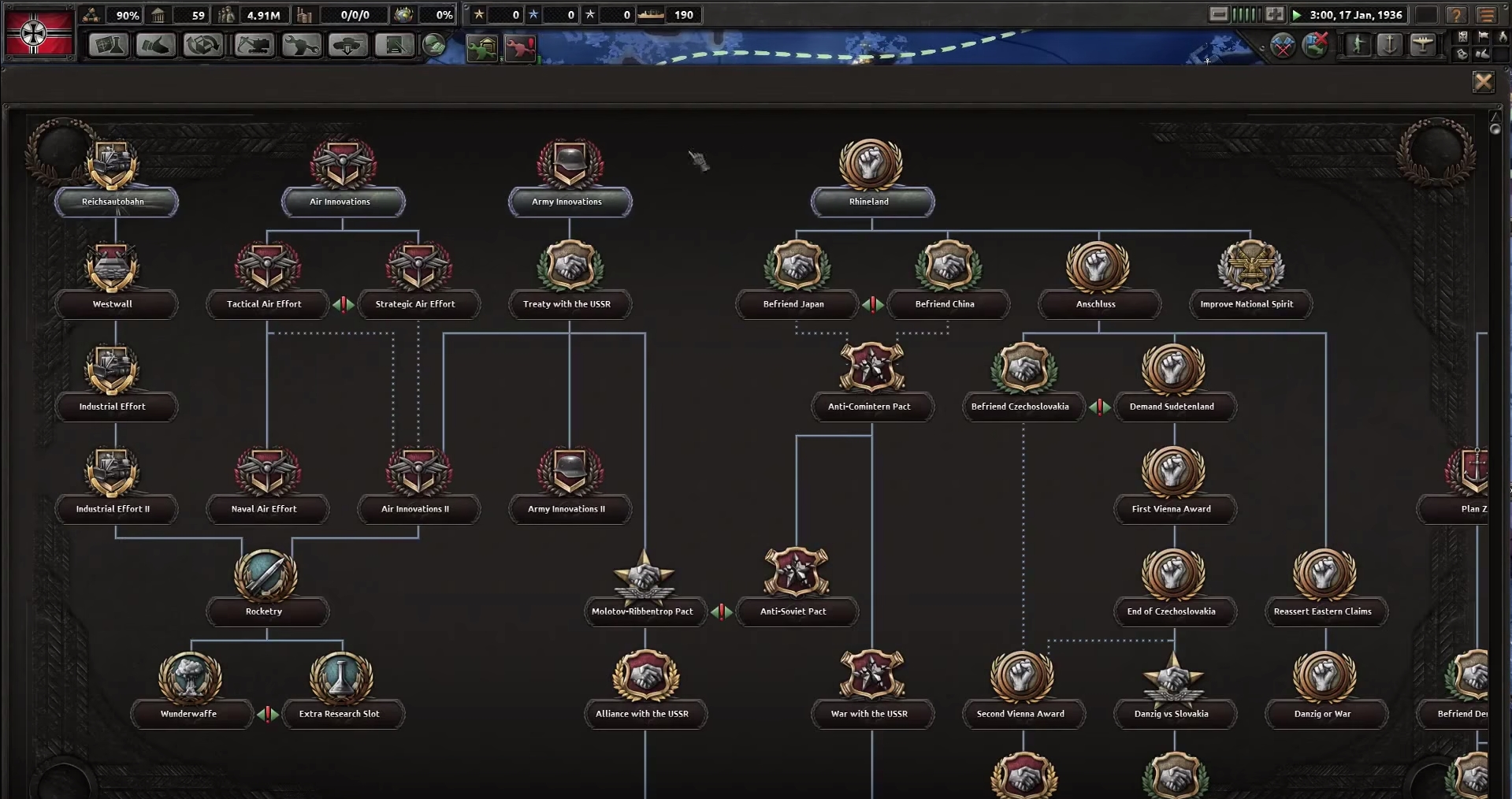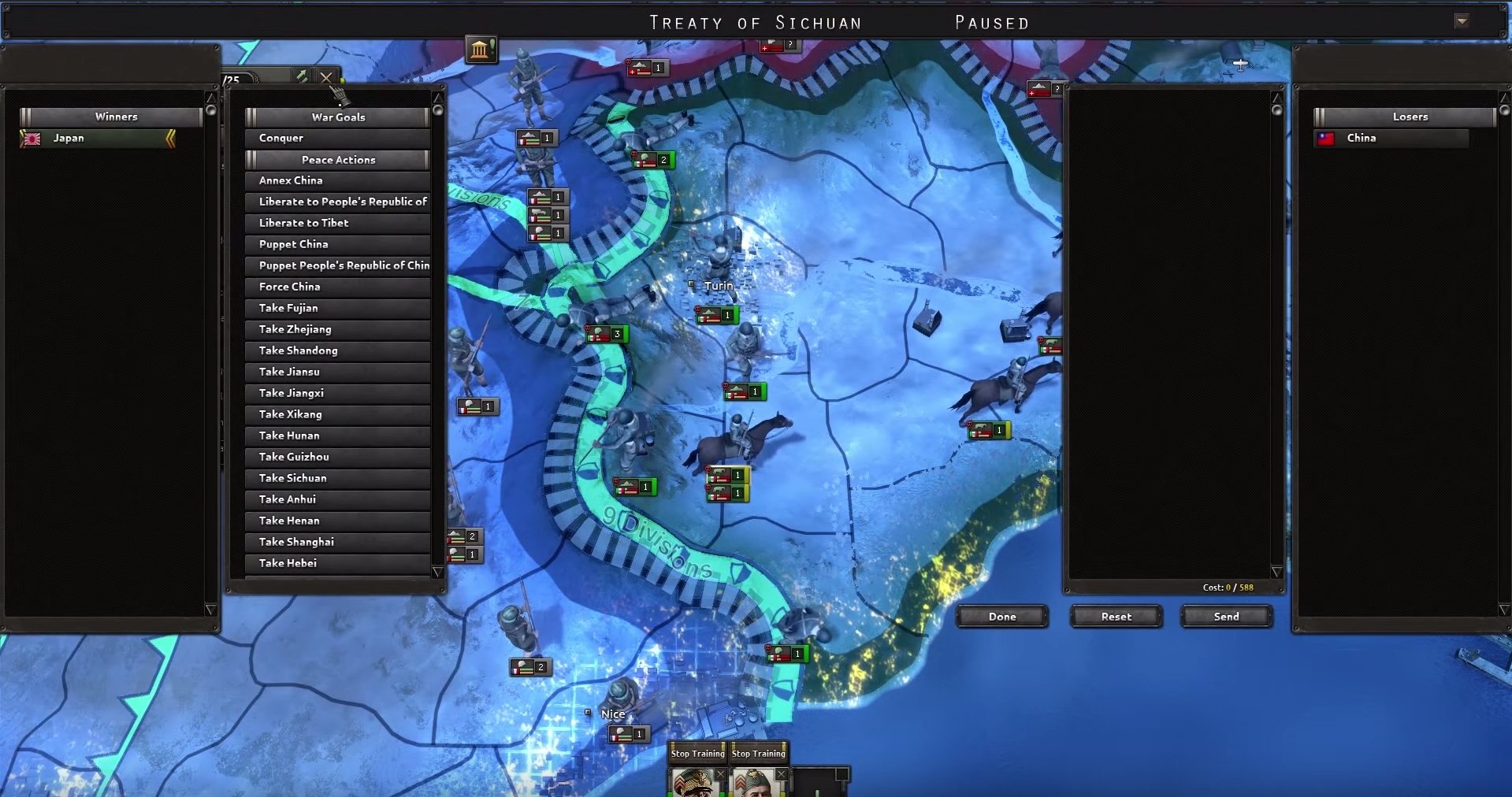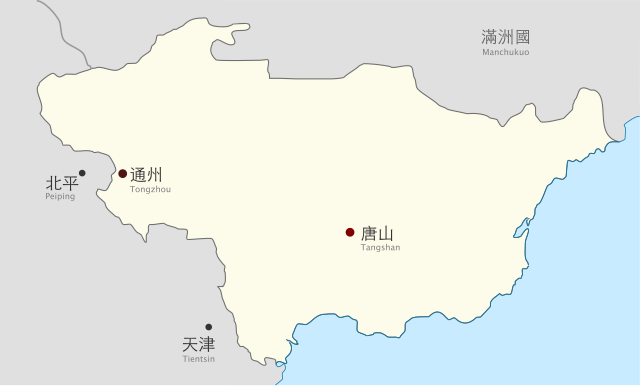Not entirely correct. The Japanese troops that took part in the Marco Polo Bridge incident were from the garrison protecting the railway from Tianjin to Beiping. They were part of the international force that had been based in the area since previous invasions, including the suppression of the Boxer Rebellion in 1901. The garrison included troops from US, France, UK, Italy etc IIRC, but the Japanese had by far the biggest garrison. These Japanese troops were all south of the DMZ, and were known as the China Garrison Army. At the start of July 1937 I think they were about Brigade strength, around 10,000 men, while the other nations had forces of a few hundred.
The forces of the Kwantung Army were all stationed north of the DMZ, ie. north of the Great Wall. The Emperor had forbidden them to go further south, one of the reasons for the convoluted start to the war.
The Japanese puppet state of East Hebei Autonomous Council covered the area north of Tianjin/Beiping to the border of Manchukuo, covering all of the DMZ. It's capital was Tungchow.
Rather than station their own troops in the DMZ, the original Peace Preservation Corps, that was a local Chinese "police" force agreed by the Treaty, became the East Hopei Army. It received training from Japanese military advisers.
The Japanese believed this to be a loyal force. But shortly after Marco Polo, the East Hebei Army rebelled against the Japanese. Whether this was pre-planned by their leaders, or a result of their unhappiness with the massacre of a Chinese NRA detachment by the Japanese is not very clear. But the East Hebei Army refused to take part in the attack on the NRA detachment, and their barracks were bombed. There was then a full scale rebellion against the Japanese by their supposed puppet in late July 1937. Japanese civilians in Tungchow were killed. Further Japanese forces from the north got involved, and the DMZ effectively became irrelevant - both sides had violated it.
The Chinese forces involved here and at Marco Polo and other incidents were part of the 29th Route Army located in the region, under Gen. Song Zheyuan. The Japanese supported him as the leader of the Hebei–Chahar Political Council, as a semi-autonomous area of China. They thought he would support their interests, and this would be a puppet state, that the Garrison Army could control. But that wasn't the case, and by the summer of 1937 it was clear that Gen.Zheyuan's forces were resistant to Japanese demands.
In the process, the China Garrison Army was reinforced, with two Independent Brigades from the Kwangtung Army and the 20th Division from Korea. These deployments were agreed by the Army High Command, not the government who were still trying to reach a diplomatic settlement.
Then the local commanders decided to "chastise" the Chinese 29th Route Army and embarrass Zheyuan, after several clashes between Chinese and Japanese troops, and attacked them at Beiping and Tianjin. So the Battle of Beiping-Tianjin occurred in late July, with Beiping occupied on 8 August. During these battles the 5th Division arrived from mainland Japan by amphibious landing at Tanngu, the port near Tianjin.
Officially, those IJN forces were still part of the Garrison Army, protecting the rights of Japan under the Boxer Protocols, south of the DMZ. Though by now there were two full square Divisions, and three Brigades. But soon more clearly an invasion from Manchukuo occurred with the Chahar Operation in mid-August. This was led by the then Kwantung Army Chief of Staff General Tojo, later to become War Minister and then Prime Minister, and included the Inner Mongolia Army as well as 3 Brigades of regular Japanese forces. This operation took place north west of Beiping into Chahar and Suiyan provinces. There was no DMZ in this region.
It came to an end on 3 Sept 1937 when the Japanese captured Kalgan, named by the Mongolians as "Haalgan" meaning the Gate (in the Great Wall). This is the modern city of Zhangjiakou, which will host some of the events of the 2022 Winter Olympics. It is an important strategic junction. It's capture began the process of creating Mengjiang as a puppet state in Inner Mongolia. And also completed the opening of all of the main routes south to the Japanese forces. By then they also controlled the northern ends of the two railways running south from Beiping and Tianjin, and had bridgeheads across the river.
The Garrison Army ceased to exist on 26 August 1937, and it's forces were redistributed to the newly formed 1st and 2nd Armies, under the overall command of the North China Area Army under General Terauchi. By then they had been further reinforced by two more Divisions from mainland Japan.
Nevertheless, it is not clear at this stage they still were intending a full scale invasion and attempt to conquer China. The government agreed further operations with the intentions of "teaching the Chinese a lesson", assuming that further destruction of Chinese forces in the region would force Chiang Kai-shek to negotiate a peace, and give up Chahar and Hebei provinces. Chiang by then had other plans, and the Chinese had put their internal fighting to one side, at least temporarily, and were determined to resist.
I hope the history is interesting to those unfamiliar with the events in 1937. But to re-iterate:
- There was a DMZ in North China between the Great Wall and outskirts of Beiping-Tianjin on 1 Jan 1936.
- The IJN and the NRA did not have forces within it, until after Marco Polo.
- The fighting began with IJN forces garrisoning Chinese territory south of the DMZ. They were legitimately there as a result of the Boxer Protocols 1901.
Most of the troops that were involved in the Battle of Beiping-Tianjin, and the subsequent offensive south to the Yellow River were transported to China after Marco Polo happened. There was no planned build-up of forces of the Kwantung Army in early 1937 along the Manchukuo border, with a surprise DoW and invasion southwards. This wasn't Barbarossa. It was messy, and might appear as an accidental war. Though the Kwantung Army leaders, including the commanders of the Garrison Army wanted war, and further expansion of their control in Northern China. This is well documented, but nothing in those documents suggest they planned to conquer all China, or even that they had any interests outside of implementing further puppet states in Northern China. It appears in July 1937 they just wanted to consolidate their control over Hebei-Chahar (blue) and East Hebei (red), in addition to Manchukuo (yellow):








